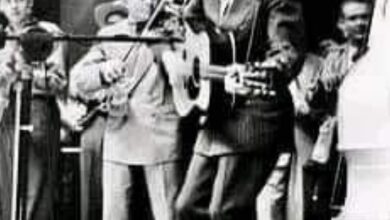In The 1950s, This Dance Was Iconic, Do You Recall It Today
In February 1958, a dance phenomenon known as “The Stroll” captured the imagination of American teenagers, transforming high school gyms and sock hops into vibrant showcases of youthful exuberance. This dance, which took its roots from African American communities, gained widespread popularity through its exposure on television, particularly on Dick Clark’s influential show, “American Bandstand.” As teenagers across the country saw the dance performed on TV, they eagerly incorporated it into their local social events, marking a significant moment in the rock ‘n’ roll era.
“The Stroll” was more than just a dance; it was a cultural symbol of the 1950s, reflecting the social and musical landscape of the time. The dance was structured with two lines of participants facing each other, creating a central aisle. Couples would take turns strolling down this aisle to the rhythm of the music, showcasing their individual style and flair. This format allowed for both collective participation and personal expression, resonating deeply with a generation eager to define their identity and embrace new forms of social interaction.
The soundtrack to this dance craze was “The Stroll” performed by The Diamonds, a Canadian doo-wop group known for their smooth harmonies and engaging performances. The Diamonds’ rendition of the song was not just a hit; it became synonymous with the dance itself, capturing the essence of the period’s joyful and rebellious spirit. Lead singer Dave Somerville, with his distinctive baritone voice, became the face of the song and the dance, guiding the rhythm and adding to the dance’s charm and appeal.
As “The Stroll” gained momentum, it became a prominent feature at dance events across the nation. Its appeal was widespread, breaking down racial and social barriers in a time of significant segregation in the United States. The dance’s simplicity made it accessible to a broad audience, while its inherent coolness and the excitement surrounding it made it irresistible to teenagers eager to be part of the latest trend.
The widespread adoption of “The Stroll” marked a moment of cultural convergence, where music, dance, and social dynamics intertwined to create a memorable chapter in American pop culture. Its success reflected the optimistic and dynamic spirit of post-war America, capturing the essence of a generation eager to embrace new experiences and express themselves through music and dance. As “The Stroll” continued to be a favorite at parties and social gatherings, it solidified its place as a defining symbol of the era.





